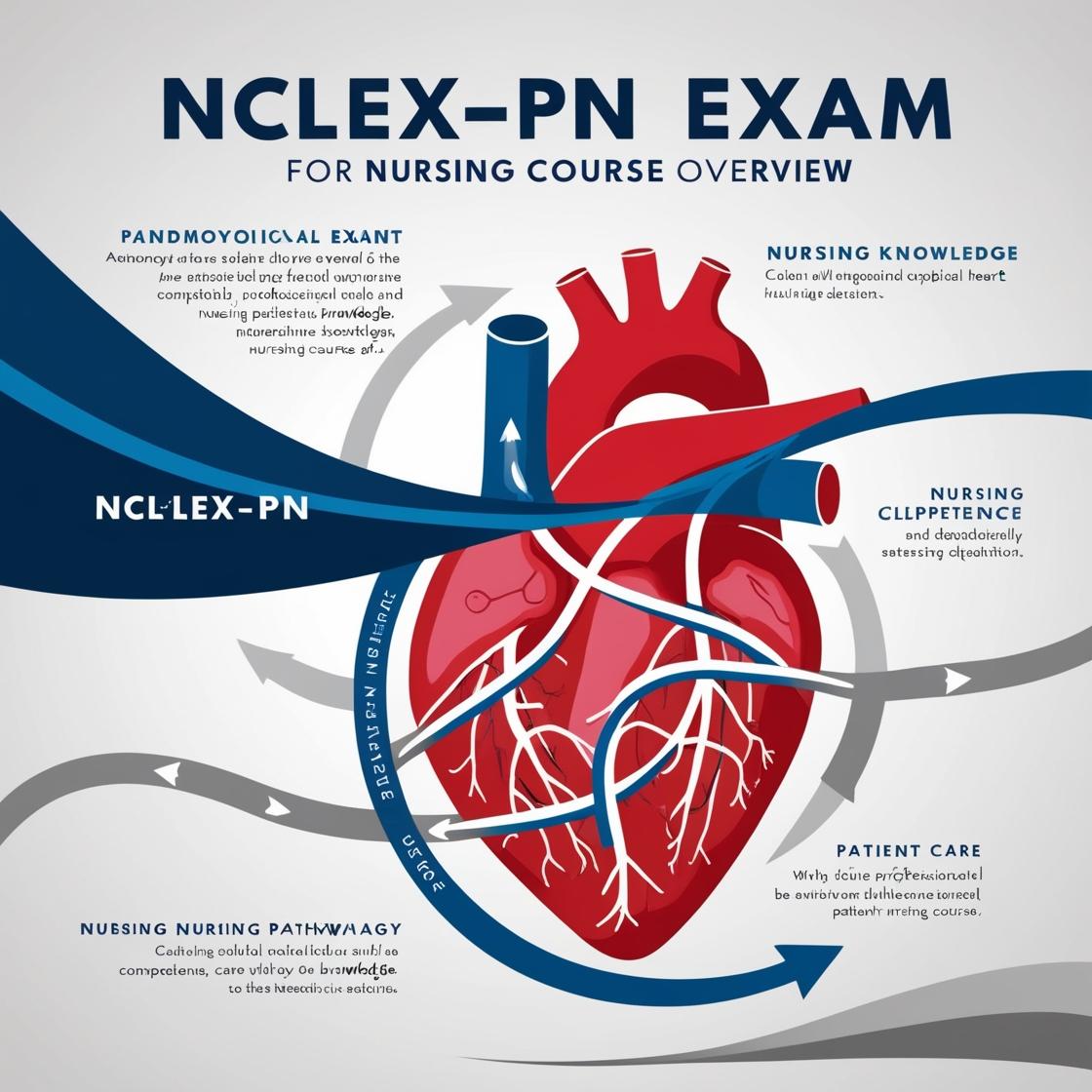NCLEX NCLEX-PN
NCLEX Question of The Day
1. For which adverse effect of the block does the postpartum nurse monitor the woman after receiving a subarachnoid (spinal) block for a cesarean delivery?
- A. Headache
- B. Pruritus
- C. Vomiting
- D. Hypertension
Correct answer: A
Rationale: The correct answer is 'Headache.' Postdural headache is a common adverse effect associated with a subarachnoid block due to cerebrospinal fluid leakage at the site of dural puncture. This headache worsens when the woman is upright and may improve when she lies flat. To manage this headache, bed rest and adequate hydration are recommended. Pruritus, vomiting, and hypertension are not typically associated with subarachnoid blocks. Pruritus, nausea, and vomiting are more commonly linked to the use of intrathecal opioids.
2. One day postoperative, the client complains of dyspnea, and his respiratory rate (RR) is 35, slightly labored, and there are no breath sounds in the lower-right base. The nurse should suspect:
- A. cor pulmonale.
- B. atelectasis.
- C. pulmonary embolism.
- D. cardiac tamponade.
Correct answer: B
Rationale: The correct answer is atelectasis. The absence of breath sounds in the lower-right base is a key finding in atelectasis, which occurs when a portion of the lung collapses. The other symptoms such as dyspnea and increased respiratory rate could be present in various pulmonary conditions. Cor pulmonale is typically associated with chronic lung disease, pulmonary embolism presents with sudden onset dyspnea and chest pain, and cardiac tamponade manifests with Beck's triad of hypotension, distended neck veins, and muffled heart sounds.
3. To determine the standards of care for the institution, the nurse should consult?
- A. Organizational Chart
- B. Personnel policies
- C. Policies and procedure manual
- D. Job descriptions
Correct answer: C
Rationale: The correct answer is the 'Policies and procedure manual.' This manual outlines the policies and procedures that govern patient care within the institution, including the standards of care that healthcare providers are expected to follow. Consulting the policies and procedure manual ensures that the nurse is adhering to the established guidelines and protocols. Choices A, B, and D are incorrect because although they are important documents within an institution, they do not specifically define the standards of care for patient management. The organizational chart illustrates the hierarchy of the institution, personnel policies outline rules related to employees, and job descriptions detail specific roles and responsibilities, none of which directly define patient care standards.
4. Which of the following goals is the most important for the nurse to address for a client admitted to the cardiac rehabilitation unit?
- A. Reduction of anxiety
- B. Referral to community resources
- C. Identification of lifestyle changes
- D. Verbalization of energy-conservation techniques
Correct answer: C
Rationale: The most important goal for a client admitted to the cardiac rehabilitation unit is the identification of lifestyle changes. This is crucial in promoting cardiovascular health and preventing future cardiac issues. Lifestyle changes such as diet modifications, exercise routines, smoking cessation, and stress management play a significant role in improving the overall cardiovascular well-being of the patient. While reducing anxiety, referring to community resources, and verbalizing energy-conservation techniques are all important aspects of care, identifying lifestyle changes is the primary focus in helping the client achieve long-term cardiovascular wellness.
5. The nurse manager is having a problem on the unit with one staff person having repetitive tardiness and leaving the unit with orders not initiated. Which action by the manager would be best?
- A. Call the staff nurse in and place them on a work improvement plan after a 3-day suspension
- B. Have the other staff gather additional information on the tardy staff member
- C. Call the staff nurse in for an interview to investigate the problem and possible solutions
- D. Assign a mentor to assist the staff member in arriving on time
Correct answer: C
Rationale: The correct action for the nurse manager would be to call the staff nurse in for an interview to discuss the issues of repetitive tardiness and incomplete tasks. This approach allows the staff member to explain the situation, and together with the manager, develop a plan to address the problems. Choice A is incorrect as it immediately involves suspension without investigation or support. Choice B is not the best course of action as it does not involve direct communication with the staff member in question. Choice D, assigning a mentor to help the staff member, could be beneficial but does not directly address the immediate issues of tardiness and incomplete tasks.

Access More Features
NCLEX PN Basic
$69.99/ 30 days
- 5,000 Questions with answers
- Comprehensive NCLEX coverage
- 30 days access
NCLEX PN Premium
$149.99/ 90 days
- 5,000 Questions with answers
- Comprehensive NCLEX coverage
- 90 days access
